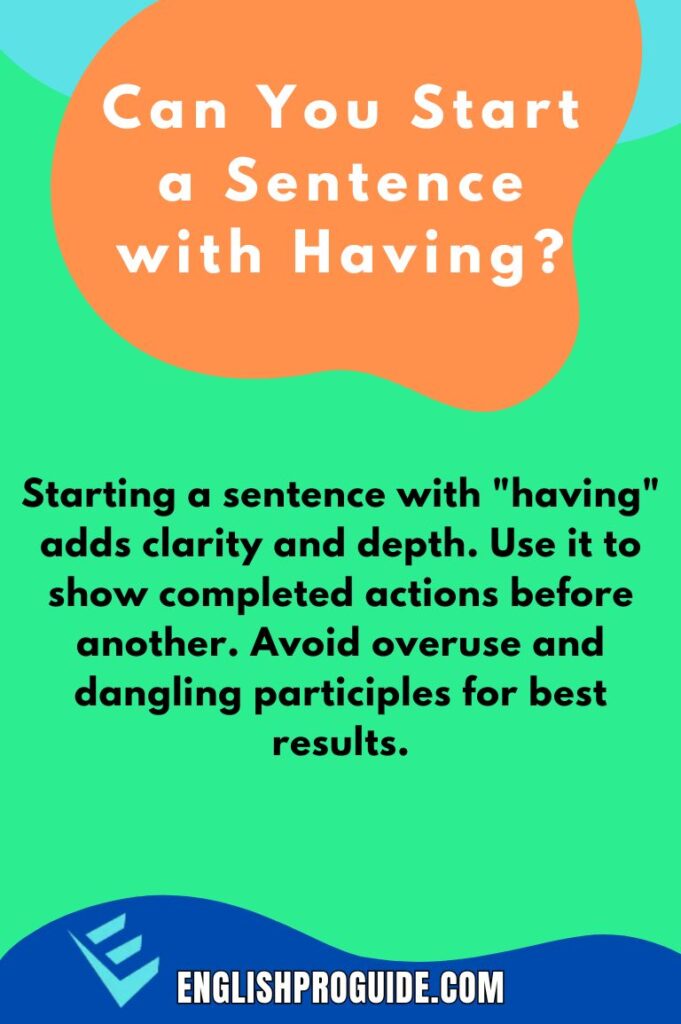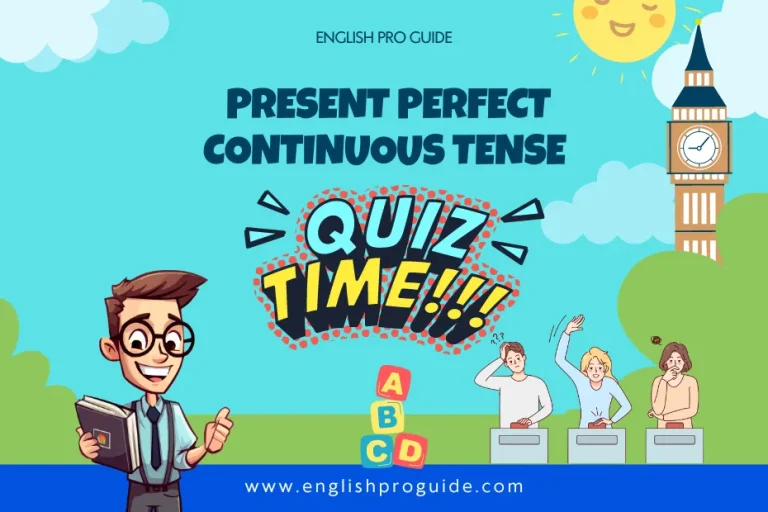How to Effectively Begin Sentences with “Having”
Starting a sentence with “having” adds clarity and depth. Use it to show completed actions before another. Avoid overuse and dangling participles for best results.
English, as captivating as it is complex, often leaves learners and even fluent speakers pondering the rules of sentence structure. One common query revolves around whether you can begin a sentence with the word “having.”
The answer is yes, you absolutely can! Not only is it correct, but starting a sentence with “having” can also add variety and depth to your writing.
This blog will guide you through the mechanics of starting a sentence with “having,” its implications in English sentence structure, and how to use it effectively.
By the end, you’ll understand when and why you might choose this construction and feel confident applying it in both casual and formal contexts.
Understanding the Structure of Having

Starting sentences with “having” often involves participial phrases—a grammatical tool powerful enough to make your writing more dynamic. These phrases are created using the past participle of a verb, preceded by “having.” For example:
- Having eaten dinner, she went for a walk.
- Having completed the project ahead of schedule, the team took a well-earned break.
Here, “having eaten dinner” and “having completed the project ahead of schedule” add additional information. They explain the context for the main action in the latter part of the sentence. This structure allows for a smooth sequence of events, clearly establishing that one action happened before the other.
Why Use “Having” to Start a Sentence?
There are plenty of reasons to incorporate this construction into your writing:
- Improve Clarity – It makes timelines in your narrative crystal clear. For instance, “Having missed the bus, she decided to walk to school” directly states why she opted to walk.
- Add Variety – Beginning sentences in diverse ways makes your writing more engaging. Too many repetitions of “I did this, then I did that” can feel monotonous. “Having” brings variety.
- Convey Formality – This structure often lends itself well to formal language, commonly found in essays, research papers, and other academic writings.
Breaking It Down with Examples
To understand this structure better, let’s analyze examples across different contexts:
- Everyday Scenario:
Having forgotten to lock the door, he rushed back home.
This example succinctly explains the sequence of events. - Creative Writing:
Having endured three sleepless nights, Lisa finally submitted her manuscript.
Here, the participial phrase functions to build anticipation and set the tone. - Academic Writing:
Having analyzed the data thoroughly, the researchers concluded their study.
This structure is common in research papers for presenting past actions.
Read More: 90 Sentence That Uses Subject Verb Split Appositive
Practical Tips to Master This Sentence Structure
Now that you know how “having” works, let’s look at the best practices for using it effectively in your sentences.
1. Recognize When to Use It
Start a sentence with “having” to emphasize actions that occur first or that provide context for something that follows. For example:
- Having seen how successful automation can be, the company decided to implement it across all departments.
The first clause lays the groundwork for the decision.
2. Reframe Sentences to Practice
Hone this skill by reframing simple sentences into ones that start with “having.” Practice will help you use this structure more intuitively. Try rewriting:
- Because she completed her homework, she went out to play.
To: Having completed her homework, she went out to play. - After eating his breakfast, Mark left for work.
To: Having eaten his breakfast, Mark left for work.
By practicing, you’ll be able to identify more opportunities to effectively use “having” in your writing.
3. Avoid Overuse
While this structure is stylish and functional, moderation is key. Overusing it can make your writing feel repetitive. Keep your sentence variety in check by using other introductory devices when appropriate.
4. Double-Check for Dangling Participles
A common pitfall of starting sentences with “having” arises when the participial phrase doesn’t clearly connect to the main subject. This results in a dangling participle, where it’s unclear who or what the phrase is describing. For example:
- Incorrect Sentence (Dangling Participle):
Having baked for hours, the cookies smelled amazing.Here, the phrase implies the cookies were baking themselves, which doesn’t make sense. Instead, revise it to explicitly state the subject:Having baked for hours, Sarah was glad the cookies smelled amazing.
Read More: 300+ Rhyming Sentences examples and Learning Guide
Common Mistakes When Using This Structure
Even experienced writers stumble when using participial phrases. Here’s how to avoid common mistakes:
1. Misplacing Modifiers
Ensure that the participial phrase directly relates to the subject of the main clause. Misplacing it, as seen above, creates ambiguity.
2. Using the Structure Too Casually
Although grammatically correct, beginning sentences with “having” tends to lean towards formal or descriptive writing. Using it excessively in casual writing or speech might come across as unnecessarily elaborate. Opt for simpler sentence structures when the occasion calls for it.
3. Wordiness and Redundancy
Like any advanced language tool, “having” can confuse readers if your sentences grow overly complex. Keep them clear and concise.
FAQs
1. Can you start a sentence with “having”?
Absolutely! Starting a sentence with “having” is not only correct but also a great way to add depth and clarity.
2. What kind of sentence is created with “having”?
It creates complex sentences where the first part introduces context about a completed action, and the second part describes the main action.
3. How do you avoid a dangling participle when using this structure?
Always ensure the participial phrase’s subject matches the main clause’s subject.
4. Is this structure suitable for casual writing?
While it can be used casually, it’s more commonly found in formal and descriptive contexts.
5. Can “having” be overused in writing?
Yes, like any stylistic element, it should be used sparingly to maintain variety and reader interest.
Conclusion
Can you start a sentence with “having?” Without a doubt, yes. This versatile structure can elevate your English writing by introducing clarity, variety, and sophistication.
Whether you’re narrating events, making arguments, or simply improving your language skills, practicing this form will enhance your command of English.
Next time you’re writing, give it a try—having learned this skill, you might just impress your readers or listeners!






